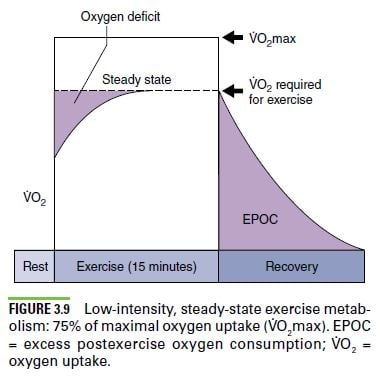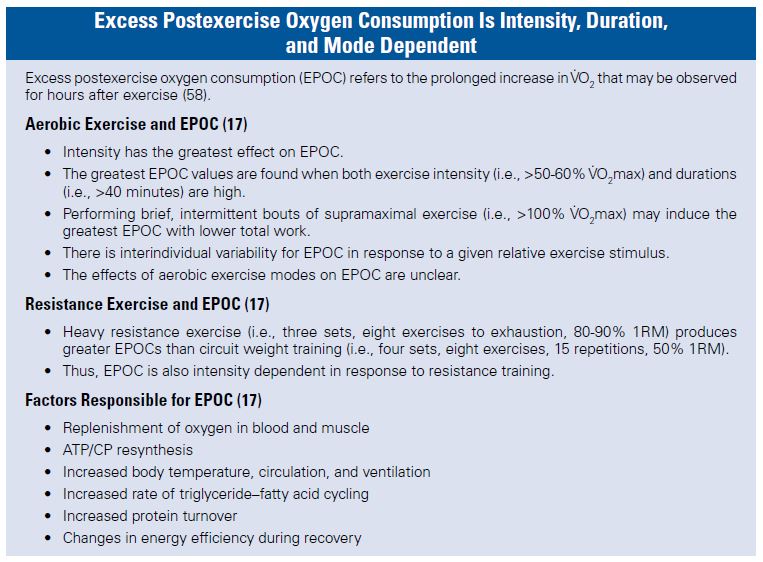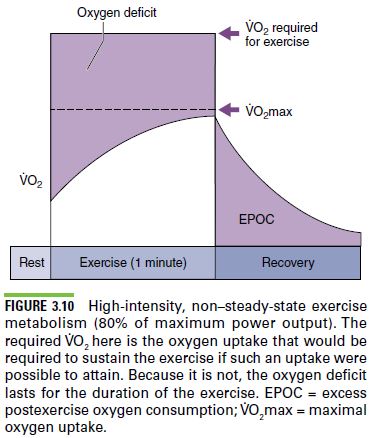Oxygen Uptake and the Aerobic and Anaerobic Contributions to Exercise
by Essentials of Strength Training and Conditioning- 4th Edition.
Kinetic Select
June 2017
Oxygen uptake (or consumption) is a measure of a person’s ability to take in oxygen and deliver it to the working tissues, and the ability of working tissues to use oxygen. During low-intensity exercise with a constant power output, oxygen uptake increases for the first few minutes until a steady state of uptake is reached.
The following is an exclusive excerpt from the book Essentials of Strength Training and Conditioning-4th Edition With Web Resource, published by Human Kinetics. All text and images provided by Human Kinetics.
Oxygen uptake (or consumption) is a measure of a person’s ability to take in oxygen via the respiratory system and deliver it to the working tissues via the cardiovascular system, and the ability of working tissues (predominantly skeletal muscle) to use oxygen. During low-intensity exercise with a constant power output, oxygen uptake increases for the first few minutes until a steady state of uptake (oxygen demand equals oxygen consumption) is reached (figure 3.9) (7, 83).

At the start of an exercise bout, however, some of the energy must be supplied through anaerobic mechanisms because the aerobic system responds slowly to the initial increase in the demand for energy (62, 153). This anaerobic contribution to the total energy cost of exercise is termed the oxygen deficit (83, 107). After exercise, oxygen uptake remains above pre-exercise levels for a period of time that varies according to the intensity and length of the exercise. Post-exercise oxygen uptake has been termed the oxygen debt (83, 107), recovery O2 (107), or the excess post-exercise oxygen consumption (EPOC) (22). The EPOC is the oxygen uptake above resting values used to restore the body to the pre-exercise condition (139). Only small to moderate relationships between the oxygen deficit and the EPOC have been observed (13, 77); the oxygen deficit may influence the size of the EPOC, but the two are not equal. The possible factors affecting the EPOC are listed in the sidebar (17, 21, 22, 58, 107).

Anaerobic mechanisms provide much of the energy for work if the exercise intensity is above the maximal oxygen uptake that a person can attain (figure 3.10). Generally, as the contribution of anaerobic mechanisms supporting the exercise increases, the exercise duration decreases (7, 68, 156, 157).

The approximate contribution of anaerobic and aerobic mechanisms to maximal sustained efforts on a cycle ergometer is shown in table 3.5 (110, 149, 159). Contributions from anaerobic mechanisms are primary up to 60 seconds, after which aerobic metabolism becomes the primary energy-supplying mechanism. The contribution of anaerobic mechanisms to this type of exercise represents the maximal anaerobic capacity (109, 149).

Developed by the National Strength and Conditioning Association, Essentials of Strength Training and Conditioning, Fourth Edition, is the fundamental preparation text for the Certified Strength and Conditioning Specialist® (CSCS®) exam as well as a definitive reference that strength and conditioning professionals will consult in everyday practice. The book is available in bookstores everywhere, as well as online at the NSCA Store.
- Privacy Policy
- Your Privacy Choices
- Terms of Use
- Retraction and Correction Policy
- © 2025 National Strength and Conditioning Association